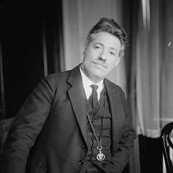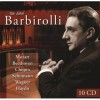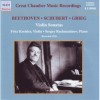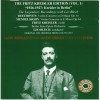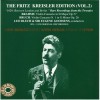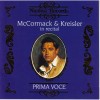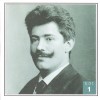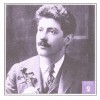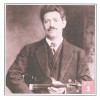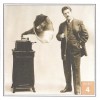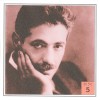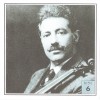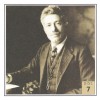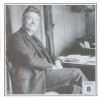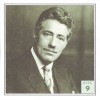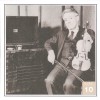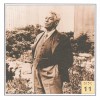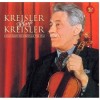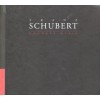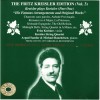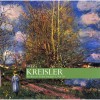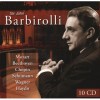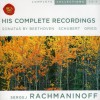| Voice/Instrument: | Violine |
Biography
Friedrich 'Fritz' Kreisler (February 2, 1875 – January 29, 1962) was an Austrian-born violinist and composer. One of the most famous violin masters of his or any other day, he was known for his sweet tone and expressive phrasing. Like many great violinists of his generation, he produced a characteristic sound which was immediately recognizable as his own. Although he derived in many respects from the Franco-Belgian school, his style is nonetheless reminiscent of the gemütlich (cozy) lifestyle of pre-war Vienna.
Kreisler was born in Vienna to a Jewish father and a German Protestant mother; he was baptised at age twelve. He studied at the Vienna Conservatory and in Paris, where his teachers included Anton Bruckner, Léo Delibes, Jakob Dont, Joseph Hellmesberger, Jr., Joseph Massart, and Jules Massenet. He made his United States debut at Steinway Hall in New York City on November 10, 1888, and his first tour of the United States in 1888–1889 with Moriz Rosenthal, then returned to Austria and applied for a position in the Vienna Philharmonic. He was turned down by the concertmaster Arnold Rosé. Hearing a recording of the Rosé Quartet, it is easy to hear why – Rosé was sparing in his use of vibrato, and Kreisler would not have blended successfully with the orchestra's violin section. As a result, he left music to study medicine. He spent a brief time in the army before returning to the violin in 1899, giving a concert with the Berlin Philharmonic conducted by Arthur Nikisch. It was this concert and a series of American tours from 1901 to 1903 that brought him real acclaim.
In 1910, Kreisler gave the premiere of Sir Edward Elgar's Violin Concerto, a work commissioned by and dedicated to him. He briefly served in the Austrian Army in World War I before being honourably discharged after he was wounded. He spent the remaining years of the war in America. He returned to Europe in 1924, living first in Berlin, then moving to France in 1938. Shortly thereafter, at the outbreak of World War II, he settled once again in the United States, becoming a naturalized citizen in 1943. He lived in that country for the rest of his life. He gave his last public concert in 1947 and broadcast performances for a few years after that.
On April 26, 1941, he was involved in the first of two traffic accidents that marked his life. Struck by a truck while crossing a street in New York, he fractured his skull, and was in a coma for over a week. Towards the end of his life, he was in another accident while traveling in an automobile, and spent his last days blind and deaf from that accident, but he "radiated a gentleness and refinement not unlike his music," according to Archbishop Fulton J. Sheen who visited him frequently during that time (Kreisler and his wife were converts to Catholicism, received into the Church by the Archbishop himself). He died in New York City in 1962 and was interred in a private mausoleum in Woodlawn Cemetery, Bronx, NY.
Kreisler wrote a number of pieces for the violin, including solos for encores, such as "Liebesleid" and "Liebesfreud". Some of Kreisler's compositions were pastiches in an ostensible style of other composers, originally ascribed to earlier composers such as Gaetano Pugnani, Giuseppe Tartini, and Antonio Vivaldi. When Kreisler revealed in 1935 that they were actually by him and critics complained, Kreisler answered that critics had already deemed the compositions worthy: "The name changes, the value remains" he said. He also wrote operettas including Apple Blossoms in 1919 and Sissy in 1932, a string quartet and cadenzas, including ones for the Brahms D major violin concerto, the Paganini D major violin concerto, and the Beethoven D major violin concerto. His cadenza for the Beethoven concerto is the one most often employed by violinists today.
He performed and recorded his own version of the first movement of the Paganini D major violin concerto. This version is rescored and in some places reharmonised. The orchestral introduction is completely rewritten in some places. The overall effect is of a late nineteenth century work.
Kreisler owned several antique violins by luthiers Antonio Stradivari, Pietro Guarneri, Giuseppe Guarneri, and Carlo Bergonzi, most of which eventually came to bear his name.
He also owned a Jean-Baptiste Vuillaume violin of 1860, which he often used as his second violin, and which he often loaned to the young prodigy Josef Hassid.
On recordings, Kreisler's style bears a resemblance to that of his younger contemporary Mischa Elman, with a tendency toward expansive tempi, a continuous and varied vibrato, expressive phrasing, and a melodic approach to passage-work. Kreisler makes considerable use of portamento and rubato. The two violinists' approaches are less similar in big works of the standard repertoire, such as Felix Mendelssohn's Violin Concerto, than in smaller pieces.
A trip to a Kreisler concert is recounted in Siegfried Sassoon's 1928 autobiographical novel Memoirs of a Fox-Hunting Man.
Kreisler's emotionally expressive and accessible manner has been contrasted with Jascha Heifetz's infallible technical precision, more emotionally detached, and with a less immediately colorful sound. It has been repeatedly observed that while Heifetz was the most conspicuously perfect violinist, Kreisler was the most beloved.
Compositions
Discography
Composers' compositions
Ludwig van Beethoven
Barbirolli - Edition - Beethoven - Symphony No. 4, Violin ConcertoSymphony / Symphonic music

